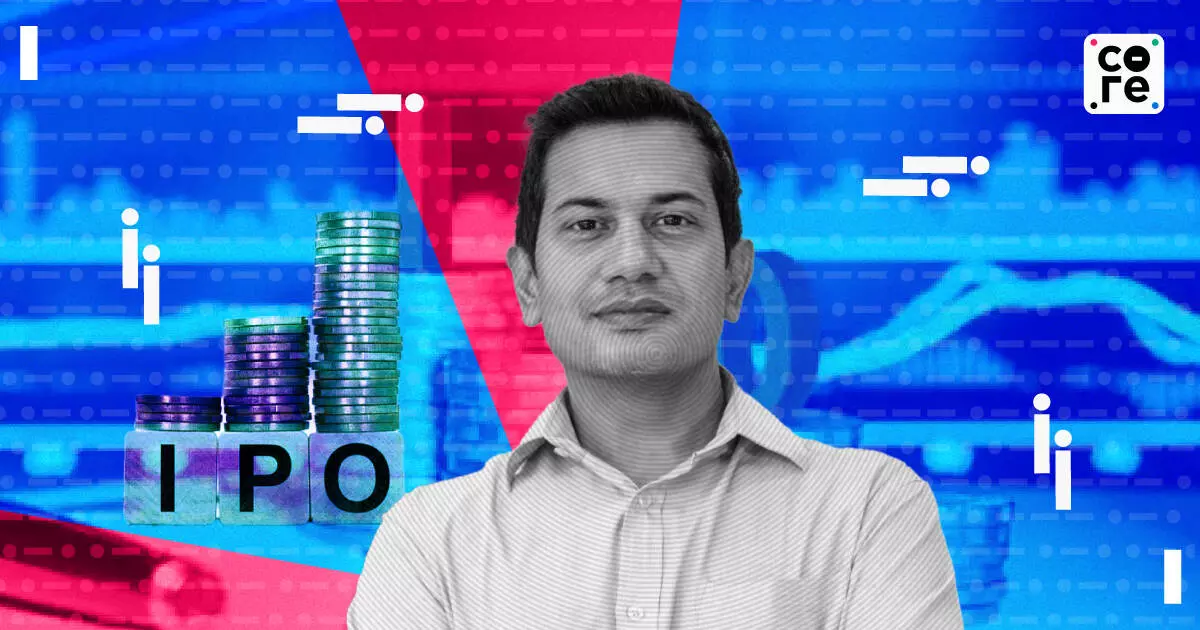
‘DIIs Decide Price’: Prime Database’s Pranav Haldea Explains Shifts In Indian Markets
What is driving the sudden interest in Indian IPOs and the sell-offs in the secondary market?

In 2024, foreign portfolio investors (FPIs) pulled out Rs 1,20,598.42 crore from India, the second worst in a decade. The FPI sell-off continued into 2025. In February, FPIs pulled out Rs 21,272 crore from Indian equities.
But here’s the interesting thing: in 2024, FPIs invested nearly the same amount of money that they withdrew from the secondary markets into India’s primary markets, purchasing initial public offerings (IPOs) worth Rs 1,20,000 crore.
Pranav Haldea, managing director of Delhi-based Prime Database Group, during an interview with The Core Report, pointed to a similar pattern in 2023. “The same figure for 2023 was positive for both primary and secondary. So, while they (FPIs) bought Rs 43,000 in the primary market, they also bought 1.27 lakh crores in the secondary market.”
A Visible Shift
But what is driving the sudden interest in Indian IPOs and the sell-offs in the secondary market?
A slew of companies looking to tap into the IPO market created an opportunity for FPIs to invest in them.
Haldea said, “If you look at the foreign investors, while they sold heavily in the secondary market, they came in the primary market in a big way.
There was tremendous liquidity last year, which is why you saw this kind of activity in the primary market.”
The FPI interest in India’s primary markets wasn’t just towards IPOs but towards qualified institutional placements (QIPs) as well...
In 2024, foreign portfolio investors (FPIs) pulled out Rs 1,20,598.42 crore from India, the second worst in a decade. The FPI sell-off continued into 2025. In February, FPIs pulled out Rs 21,272 crore from Indian equities.
But here’s the interesting thing: in 2024, FPIs invested nearly the same amount of money that they withdrew from the secondary markets into India’s primary markets, purchasing initial public offerings (IPOs) worth Rs 1,20,000 crore.
Pranav Haldea, managing director of Delhi-based Prime Database Group, during an interview with The Core Report, pointed to a similar pattern in 2023. “The same figure for 2023 was positive for both primary and secondary. So, while they (FPIs) bought Rs 43,000 in the primary market, they also bought 1.27 lakh crores in the secondary market.”
A Visible Shift
But what is driving the sudden interest in Indian IPOs and the sell-offs in the secondary market?
A slew of companies looking to tap into the IPO market created an opportunity for FPIs to invest in them.
Haldea said, “If you look at the foreign investors, while they sold heavily in the secondary market, they came in the primary market in a big way.
There was tremendous liquidity last year, which is why you saw this kind of activity in the primary market.”
The FPI interest in India’s primary markets wasn’t just towards IPOs but towards qualified institutional placements (QIPs) as well.
What Next?
IPOs and QIPs have seen large amounts of cash flow in the last few years, increasing liquidity in the primary markets and the secondary markets have risen alongside.
Haldea said, “I was looking at data over the last four years, which is from calendar 2021 to 2024, and I saw that Rs 3.87 lakh crore has been raised from mainboard IPOs and another Rs 2.5 lakh crore from QIPs. This is all primary market activity.”
While FPI selling has been consistent since 2024, there have been particular concerns in the last quarter that could have triggered this.
Lowered corporate earnings in the last two quarters along with geopolitical issues such as Donald Trump taking over as US president have contributed to this.
“But I still fundamentally do believe that there is demand for good quality paper at good valuations. If you do see some issues in the primary market, you just had the mega issue of HexaWare recently as well. While retail and HNI did not participate in a big way, you had significant QIB demand, which may have helped the IPO go through,” Haldea said.
And these concerns will likely remain in the next quarter as well. Increased corporate earnings could perhaps improve the situation slightly.
However, another shift stands out. Earlier FPIs would decide prices. But that’s not what happens now.
“Domestic institutional investors (DIIs), just by the sheer flows which they have, Rs 25,000-30,000 crore worth of SIP money coming on a month-on-month basis, have actually become the primary players in the primary market as well. From the past when FPIs used to decide the price, now it's the DIIs who decide the price...
And FPIs are following the DII behaviour, and then they're investing in the primary market.”
What is driving the sudden interest in Indian IPOs and the sell-offs in the secondary market?

